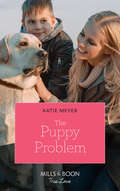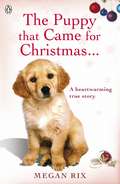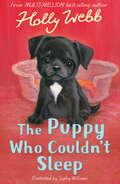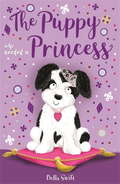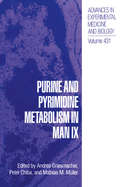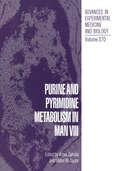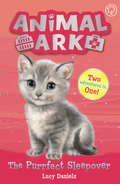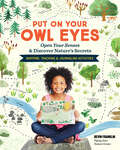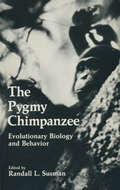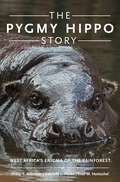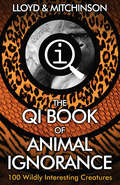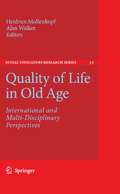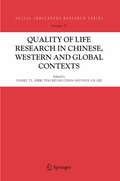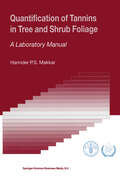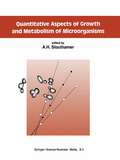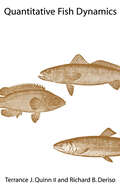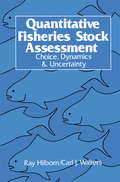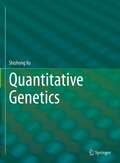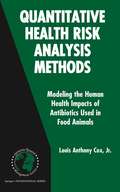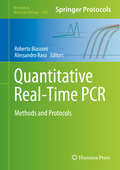- Table View
- List View
The Puppy Problem (Paradise Pets #1)
by Katie MeyerA canine conundrum sparks undeniable romantic emotions…
Puppy Problems: Puppy Problems (Peanut, Butter & Crackers #1)
by Paige BraddockA goofy new puppy turns the lives of two rescue pets upside down in this hilarious graphic novel for pet lovers and fans of The Secret Life of Pets. Butter and Crackers are rescue pets living their best (and quiet) life. Butter, a laidback cat, has access to all the butter he can lick and Crackers, a slightly nervous dog, is free to bark at squirrels to his heart's content. With an owner who goes to work every day, they spend their days doing whatever they want. But when Peanut, a brand-new puppy with big floppy ears, arrives, everything changes. He has no appreciation for the quiet life, no idea how stairs work and he's even afraid of the dark! Butter and Crackers have had enough - this puppy needs to go! But when Peanut escapes and gets lost, it turns out that home isn't home without the noisy little puppy after all... A sweet and hilarious story about life seen through the eyes of pets, perfect for newly independent readers, visual readers and pet owners.
The Puppy that Came for Christmas and Stayed Forever: How A Dog Brought One Family The Gift Of Joy
by Megan RixThe Puppy that Came for Christmas and Stayed Forever is Megan Rix's bestselling memoir.When Megan and Ian got married, they wanted to start a family. But their desire to be parents ended up bringing one furry bundle of fun after another into their lives.At the same time as embarking on difficult and traumatic fertility treatment, Megan and Ian became involved with a charity which provides helper dogs to people with disabilities. And into their home one day came Emma, a soft, sweet-natured puppy with whom they fell instantly in love. However, after six months Emma had completed her training and was given to someone in need. To get over their broken hearts, Megan and Ian took in another pup: Freddy. And fell in love all over again . . . only for Freddy to move on too.Megan and Ian didn't know if they could keep taking in these adorable puppies and giving them away later. It was getting too hard, too painful.But then, one Christmas, little Traffy came along . . .If you liked Marley and Me then The Puppy that Came for Christmas but Stayed Forever is for you. Megan Rix's heart-warming seasonal story will have everyone yearning for a bit of puppy love in their lives.Megan Rix lives in England with her husband, and their adorable dogs, Traffy and Bella. She is a Sunday Times best-selling author, and her other books include The Great Escape, and a host of children's books written under the pen-name Ruth Symes.
The Puppy Who Couldn't Sleep (Holly Webb Animal Stories #42)
by Holly WebbWhen Lara and her dad discover a scared black puppy in an alleyway while walking their dog Oliver, Lara desperately wants to take him home and look after him. Her dad isn’t so sure. Lara can’t stop thinking about the poor puppy and soon goes to find him again. She convinces her dad to let him stay and names him Jet. But when Jet spends all night howling, Lara’s dad isn’t impressed. Night after night, the wailing continues, until it begins to look like Jet may need to go to the animal shelter. Is there anything Lara can do to help Jet sleep?
The Puppy Who Needed a Princess
by Bella SwiftA royally funny dog story from the best-selling author of THE PUG WHO WANTED TO BE UNICORN.When Rosie sneaks into the palace, she quickly makes a new friend - a young princess named Pippa! The princess's parents - the soon-to-be-crowned king and queen - promised their daughter a new pet when they moved to the palace. But a scruffy stray isn't what they had in mind . . . Pippa's grumpy nanny and the posh royal dogs make Rosie feel like she doesn't belong at the palace. But what Rosie lacks in breeding, she makes up for in street-smarts. There's a mysterious man lurking around the palace, and Rosie is sure he's up to no good. With coronation celebrations coming up, Rosie is determined to keep Princess Pippa - and the crown jewels - safe. Can Rosie prove to the royal family that you don't need to be a pedigree pooch to be a princess's pet?
Pure Joy: The Dogs We Love
by Danielle SteelThe perfect gift for all animal lovers.In this charming, heartfelt memoir, Danielle Steel tells the story of how she met a dog the size of a mouse, with a personality that could light up an entire room.Brimming with warmth and insight on every page, Danielle takes a look at the beloved pets who have brought joy, and sometimes chaos, to her home through the years: from Minnie’s arrival at home in San Francisco to clothes shopping jaunts in Paris, Minnie’s adventures provide the perfect backdrop for a heartfelt look at the magic that dogs bring to our lives, and how they become part of the family.
Purine and Pyrimidine Metabolism in Man IX (Advances in Experimental Medicine and Biology #431)
by Andrea Griesmacher Peter Chiba Mathias M. Müllerth th This volume comprizes articles presented at the joint IX International and 6 Euro pean Symposium on Purine and Pyrimidine Metabolism in Man held in Gmunden, Austria, June 1 through 7, 1997. Since the first of this series of meetings was held in Israel in 1973, conventions were organized every three years in different parts of the world including the USA, Japan, and Europe. The different aspects of purine and pyrimidine metabolism bring together re searchers working in molecular genetics, biochemical pharmacology, biochemistry, devel opmental biology, immunology, epidemiology and the clinics. Oriented research in the field has been seminal for the development of potent anticancer and antiviral drugs. As the number of genes which are cloned, grows, the understanding of metabolism is increas ingly enlarged and might provide leads to further improve therapeutic concepts and to bet ter understand mechanisms responsible for the development of resistance against these drugs. In certain diseases purine and pyrimidine analogs represent not only the drugs of choice but in fact are the sole therapeutic alternative at present. The field has also taken an early lead in attempting to correct inborn errors of purine and pyrimidine metabolism by gene therapy. The organization of this meeting involved a large number of people who dedicated their time in an effort to make this symposium a success. We thank the Abstract Review Committee, the International Advisory Board and in particular the Symposium Secretariat for doing a wonderful job.
Purine and Pyrimidine Metabolism in Man VIII (Advances in Experimental Medicine and Biology #370)
by Amrik Sahota Milton W. TaylorThese volumes record the presentations made at the VIII International Symposium on Purine and Pyrimidine Metabolism in Manheld at Indiana University, Bloomington, USA from May 22- May 27, 1994. This was a continuation of meetings held every three years with the idea of bringing clinicians and basic scientists together, which we hope results in cross-fertilization of ideas. Some of the papers presented in this volume represent oral contributions and others are from posters, but we emphasize that both are considered of equal merit. As is obvious from a perusal of the titles of the papers there has been a shift in the focus of this meeting, which reflects a general shift in the area of purine and pyrimidine metabolism. The emphasis has definitely shifted to gene structure and molecular genetics, with the beginnings we hope of gene therapy as an important branch of this area of science. Although many of the inherited diseases discussed in this text can be treated with drugs, the major thrust in the futurewill be in gene therapy, where the gene (or cDNA) will be used to treat the patient with enzyme deficiency, particularly if the patient is young. As can be seen from the Iist of authors there is a remarkable degree of international cooperation in this area across countries and continents. We thank the many participants who have attended these symposia many times, and we welcome the large group of scientists from Eastern Europe who are attending this meeting for the first time.
The Purrfect Sleepover: Special 1 (Animal Ark)
by Lucy DanielsHelping animals, having fun! The best-selling Animal Ark series has been reimagined for a new generation of children. Perfect for animal lovers and fans of Holly Webb and Magic Animal Friends. A special bumper-length book with two stories in one! Amelia and Sam love helping out at Animal Ark vets, especially when they get to look after adorable kittens! But when Amelia cat-sits troublesome kitten Luna, the little cat causes a big problem ...With the naughty kitten to look after and a cat event at Animal Ark to help organise, everything's going cat crazy!A brilliant animal series from multi-million-selling author Lucy Daniels, loved by parents and children alike!"I remember reading these books as a child myself. Now buying them for my own daughter. . . Delightful stories!" "I love this series of books. They made me realise how special animals are!"
Puss in Books: Our Best-loved Writers On Their Best-loved Cats
by Paul MagrsA charming collection of quotes about cats from our favourite authors, accompanied by artwork in the trademark style of Paul Magrs (author of The Panda, the Cat and the Dreadful Teddy).
Put On Your Owl Eyes: Open Your Senses & Discover Nature's Secrets; Mapping, Tracking & Journaling Activities
by Devin FranklinKids aged 8 to 13 will sharpen their senses and get to know the natural world up close with this guide to nature observation and exploration, including tracking, mapping, and reflective journaling activities.
The Pygmy Chimpanzee: Evolutionary Biology and Behavior (Evolutionary Biology)
by Randall L. SusmanHistorical Remarks Bearing on the Discovery of Pan paniscus Whether by accident or by design, it was most fortunate that Robert M. Yerkes, the dean of American primatologists, should have been the first scientist to describe the characteristics of a pygmy chimpanzee, which he acquired in August 1923, when he purchased him and a young female companion from a dealer in New York. The chimpanzees came from somewhere in the eastern region of the Belgian Congo and Yerkes esti mated the male's age at about 4 years. He called this young male Prince Chim (and named his female, com mon chimpanzee counterpart Panzee) (Fig. I). In his popular book, Almost Human, Yerkes (1925) states that in all his experiences as a student of animal behavior, "I have never met an animal the equal of this young chimp . . . in approach to physical perfection, alertness, adaptability, and agreeableness of disposition" (Yerkes, 1925, p. 244). Moreover, It would not be easy to find two infants more markedly different in bodily traits, temperament, intelligence, vocalization and their varied expressions in action, than Chim and Panzee. Here are just a few points of contrast. His eyes were black and in his dark face lacked contrast and seemed beady, cold, expressionless. Hers were brown, soft, and full of emotional value, chiefly because of their color and the contrast with her light complexion.
The Pygmy Hippo Story: West Africa's Enigma of the Rainforest
by Phillip T. Robinson Gabriella L. Flacke Knut M. HentschelThough the pygmy hippopotamus has been designated as a flagship species of West African forests (meaning that by raising conservation efforts for a single species, an entire ecological region could benefit), very little research has been published on the animal. They are solitary, nocturnal, and highly evasive, and until recent developments in "camera trap" technology, they were considered the least-photographed large mammal species in the world. The information currently available on this endangered species is scattered, limited, redundant, and often inaccurate, and no major volume exists as a resource for those interested in the conservation effort for the species, until now. Phillip Robinson and his coauthors provide a treatment of the natural history, biology, and ecology of the pygmy hippo, along with a discussion of the rare animal's taxonomic niche and a summary of the research initiatives involving it up to this point. The authors show the ways in which the pygmy hippo has come into contact with people in West African countries, both in terms of ecological and cultural impact. This creature has been the subject of local folktales, and is treated as almost mythic in some regions. Information on issues related to captivity, breeding, and zoos is provided. The book is heavily illustrated with original photographs and anatomic drawings. The project should be of use to conservation biologists, zoologists and natural history readers, and will be the definitive single-volume account of an animal that the scientific community has designated to be ecologically significant to West Africa.
The Pygmy Hippo Story: West Africa's Enigma of the Rainforest
by Phillip T. Robinson Gabriella L. Flacke Knut M. HentschelThough the pygmy hippopotamus has been designated as a flagship species of West African forests (meaning that by raising conservation efforts for a single species, an entire ecological region could benefit), very little research has been published on the animal. They are solitary, nocturnal, and highly evasive, and until recent developments in "camera trap" technology, they were considered the least-photographed large mammal species in the world. The information currently available on this endangered species is scattered, limited, redundant, and often inaccurate, and no major volume exists as a resource for those interested in the conservation effort for the species, until now. Phillip Robinson and his coauthors provide a treatment of the natural history, biology, and ecology of the pygmy hippo, along with a discussion of the rare animal's taxonomic niche and a summary of the research initiatives involving it up to this point. The authors show the ways in which the pygmy hippo has come into contact with people in West African countries, both in terms of ecological and cultural impact. This creature has been the subject of local folktales, and is treated as almost mythic in some regions. Information on issues related to captivity, breeding, and zoos is provided. The book is heavily illustrated with original photographs and anatomic drawings. The project should be of use to conservation biologists, zoologists and natural history readers, and will be the definitive single-volume account of an animal that the scientific community has designated to be ecologically significant to West Africa.
QI: Everything You Think You Know Is Wrong
by John Lloyd John MitchinsonJoin QI's expedition into the animal kingdom to encounter 100 of its most remarkable subjects. Marvel at the elephants that walk on tiptoe, pigs that shine in the dark, and the woodlouse that drinks through its bottom.Albatrosses can fly non-stop for ten years without touching the ground. Box jellyfish have twenty-four eyes. Geese mourn their dead. Koalas don't drink. Monkeys pay to look at porn. Lobsters live for a century. Mice sing while having sex. Spiders can fly.
Quality of Life in Old Age: International and Multi-Disciplinary Perspectives (Social Indicators Research Series #31)
by Heidrun Mollenkopf Alan WalkerThis volume brings together leading researchers on quality of life in old age to focus on one of the most important issues in both gerontology and quality of life studies. There are very few texts available on this topic and none of an international and multi-disciplinary nature. For these reasons and the high quality of the authors we have assembled, this will be a seminal text for both gerontology and quality of life researchers.
Quality-of-Life Research in Chinese, Western and Global Contexts (Social Indicators Research Series #25)
by Ying Keung Chan Paul S. N. Lee Daniel T. L. ShekThe majority of studies on the quality of life have been conducted in Western contexts and are based on Western participants. Comparatively speaking, there are only a few studies that have been conducted in different Chinese contexts. Also, there are fewer QOL studies based on children and adolescents, or studies that examine the relationship between QOL and economic disadvantage. In addition, more research is needed to address the methodological issues related to the assessment of quality of life. This volume is a constructive response to the challenges described above. It is the first book to cover research in Chinese, Western and global contexts in a single volume. It is a ground-breaking volume in which Chinese studies on the quality of life are collected. The book includes papers addressing family QOL, quality of life in adolescents experiencing economic disadvantage, and methodological issues in the assessment of QOL. It is written by researchers working in a variety of disciplines.
Quantification of Tannins in Tree and Shrub Foliage: A Laboratory Manual
by Harinder P.S. MakkarHere is the most complete guide available for the analysis of tannins. A battery of tannin methodologies is presented in a simple, clear and easy-to-understand manner. This unique guide covers chemical, biological and radio isotopic tannin assays. Comprehensive step-by-step protocols are presented for each method. The protocols enable non-specialists and specialists alike to implement the methods easily in the laboratory. It is an ideal laboratory manual for research scientists, graduate students, and laboratory personnel working in the fields of animal nutrition, soil nutrient management, wild life-plant interactions, and plant breeding.
Quantitative Aspects of Growth and Metabolism of Microorganisms
by A. H. StouthamerApplication of recent advances, such as non-equilibrium thermodynamics, the maintenance concept and the material balancing method, to the description, of microbial growth has suggested new experimental approaches which have yielded a wealth of data. These data have been used to develop mathematical models of microbial growth and metabolism, and the models have made it possible to direct the metabolism of a microorganism in such a way that more of a certain desired product is made. While a full quantitative description of all aspects of microbial growth and metabolism is till remote, the new approaches are opening up large areas of new potential -- it is now possible, for instance, to deal with individual cells in a population and with quantitative aspects of product formation and optimisation. Microbiologists, biochemists and physiologists will find this an invaluable update on a field of great promise.
Quantitative Fish Dynamics (Biological Resource Management)
by Terrance J. Quinn Richard B. DerisoThis book serves as an advanced text on fisheries and fishery population dynamics and as a reference for fisheries scientists. It provides a thorough treatment of contemporary topics in quantitative fisheries science and emphasizes the link between biology and theory by explaining the assumptions inherent in the quantitative methods. The analytical methods are accessible to a wide range of biologists, and the book includes numerous examples. The book is unique in covering such advanced topics as optimal harvesting, migratory stocks, age-structured models, and size models.
Quantitative Fish Dynamics (Biological Resource Management)
by Terrance J. Quinn Richard B. DerisoThis book serves as an advanced text on fisheries and fishery population dynamics and as a reference for fisheries scientists. It provides a thorough treatment of contemporary topics in quantitative fisheries science and emphasizes the link between biology and theory by explaining the assumptions inherent in the quantitative methods. The analytical methods are accessible to a wide range of biologists, and the book includes numerous examples. The book is unique in covering such advanced topics as optimal harvesting, migratory stocks, age-structured models, and size models.
Quantitative Fisheries Stock Assessment: Choice, Dynamics and Uncertainty
by R. Hilborn C. J. WaltersThis book really began in 1980 with our first microcomputer, an Apple II +. The great value of the Apple II + was that we could take the computer programs we had been building on mainframe and mini-computers, and make them available to the many fisheries biologists who also had Apple II + 's. About 6 months after we got our first Apple, John Glaister came through Vancouver and saw what we were doing and realized that his agency (New South Wales State Fisheries) had the same equipment and could run the same programs. John organized a training course in Australia where we showed about 25 Australian fisheries biologists how to use microcomputers to do many standard fisheries analyses. In the process of organizing this and sub sequent courses we developed a series of lecture notes. Over the last 10 years these notes have evolved into the chapters of this book.
Quantitative Genetics
by Shizhong XuThe intended audience of this textbook are plant and animal breeders, upper-level undergraduate and graduate students in biological and agricultural science majors. Statisticians who are interested in understanding how statistical methods are applied to genetics and agriculture can benefit substantially by reading this book. One characteristic of this textbook is represented by three chapters of technical reviews for Mendelian genetics, population genetics and preliminary statistics, which are prerequisites for studying quantitative genetics. Numerous examples are provided to illustrate different methods of data analysis and estimation of genetic parameters. Along with each example of data analyses is the program code of SAS (statistical analysis system).
Quantitative Health Risk Analysis Methods: Modeling the Human Health Impacts of Antibiotics Used in Food Animals (International Series in Operations Research & Management Science #82)
by Louis Anthony Cox Jr.This book grew out of an effort to salvage a potentially useful idea for greatly simplifying traditional quantitative risk assessments of the human health consequences of using antibiotics in food animals. In 2001, the United States FDA’s Center for Veterinary Medicine (CVM) (FDA-CVM, 2001) published a risk assessment model for potential adverse human health consequences of using a certain class of antibiotics, fluoroquinolones, to treat flocks of chickens with fatal respiratory disease caused by infectious bacteria. CVM’s concern was that fluoroquinolones are also used in human medicine, raising the possibility that fluoroquinolone-resistant strains of bacteria selected by use of fluoroquinolones in chickens might infect humans and then prove resistant to treatment with human medicines in the same class of antibiotics, such as ciprofloxacin. As a foundation for its risk assessment model, CVM proposed a dramatically simple approach that skipped many of the steps in traditional risk assessment. The basic idea was to assume that human health risks were directly proportional to some suitably defined exposure metric. In symbols: Risk = K × Exposure, where “Exposure” would be defined in terms of a metric such as total production of chicken contaminated with fluoroquinolone-resistant bacteria that might cause human illnesses, and “Risk” would describe the expected number of cases per year of human illness due to fluoroquinolone-resistant bacterial infections caused by chicken and treated with fluoroquinolones.
Quantitative Real-Time PCR: Methods and Protocols (Methods in Molecular Biology #1160)
by Roberto Biassoni and Alessandro RasoQuantitative Real-Time PCR: Methods and Protocols focuses on different applications of qPCR ranging from microbiological detections (both viral and bacterial) to pathological applications. Several chapters deal with quality issues which regard the quality of starting material, the knowledge of the minimal information required to both perform an assay and to set the experimental plan, while the others focus on translational medicine applications that are ordered following an approximate logical order of their medical application. The last part of the book gives you an idea of an emerging digital PCR technique that is a unique qPCR approach for measuring nucleic acid, particularly suited for low level detection and to develop non-invasive diagnosis. Written for the Methods in Molecular Biology series, most chapters include introductions to their respective topics, lists of the necessary materials and reagents, step-by-step, laboratory protocols and tips on troubleshooting and avoiding known pitfalls.Practical and authoritative, Quantitative Real-Time PCR: Methods and Protocols aims to aid researchers seeking to devise new qPCR-based approaches related to his or her area of investigation.
